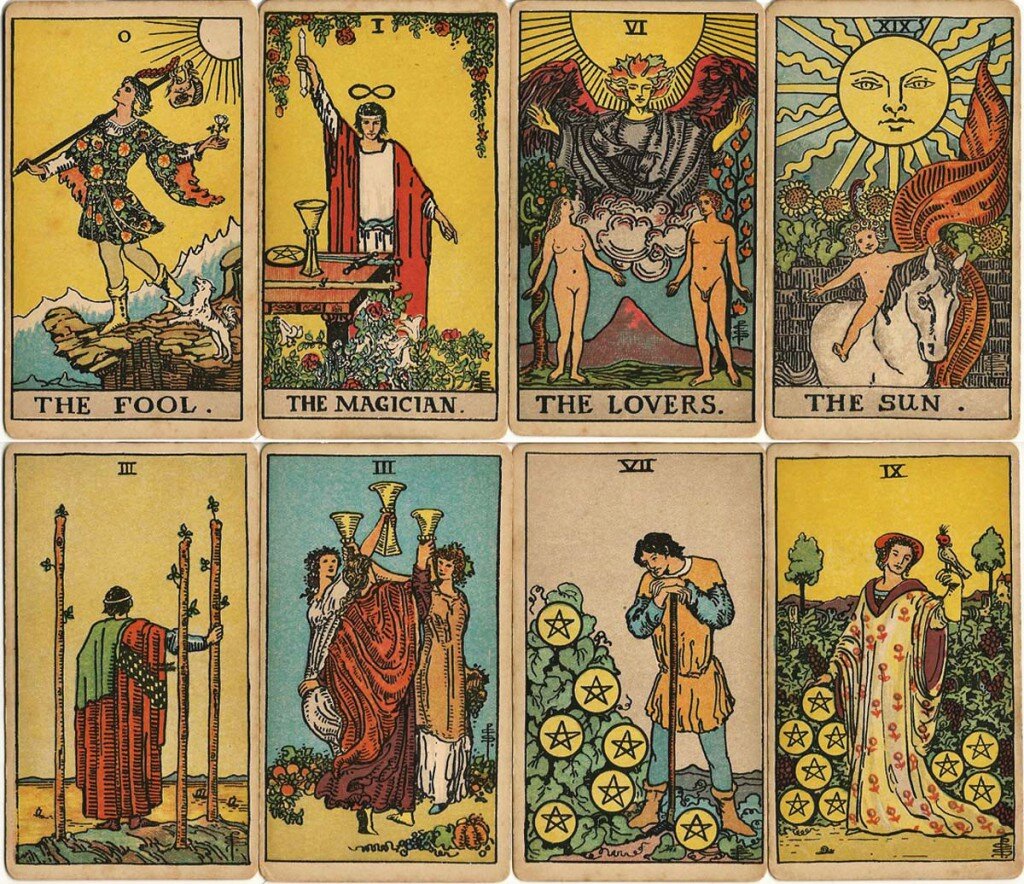Tarot & Oracle
The Tarot is at its tabletop practical basis a deck of decorated cards. Its order and appearance began to be somewhat uniform in the Renaissance, roughly the 15th Century. More complex meanings and purposes of this tool of gamesmanship seem to have begun early in the 18th Century, eventually growing and roaming into the wide spectrum of entertainment, interrogation, divination, and cartomancy that we know today.
A friend introduced me to the I Ching in college, and I quickly understood it to be an effective and enjoyable method of psychological investigation. After years of being put off by some of the more arcane and ambitious claims of tarot enthusiasts, I finally saw the analogy to the I Ching. After many years of resisting carrying the tarot in the store, I now stock it in the simple and inquiring spirit of my understanding. I am attracted to eye-catching art, of course, and I like the idea of cats being involved, of course, although I suspect cats may be more interested in pushing the cards off the table than in being supportive familiars. I respect the tarot’s history, and I will seek out books that place in the context of its origin and survival.
I am aware that the supply and diversity of decks is enormous, but I begin simply and humbly, alert to what my customers like.
Smith-Waite Tarot Deck Borderless Edition
Smith-Waite Tarot Deck Borderless Edition
Pamela Colman Smith’s beloved tarot artwork, created in 1909 under the direction of Arthur E. Waite, is now presented in a borderless format for a more immersive reading experience. This 84-card deck includes four extra cards with reproduction samples of Pixie’s non-tarot artwork, including two watercolor paintings “Catch Me” and “Duet”; the Lovers illustration from the play Deirdre; and an illustration from the sheet music for “Christmas Carol.” The deck comes with an instruction booklet.

